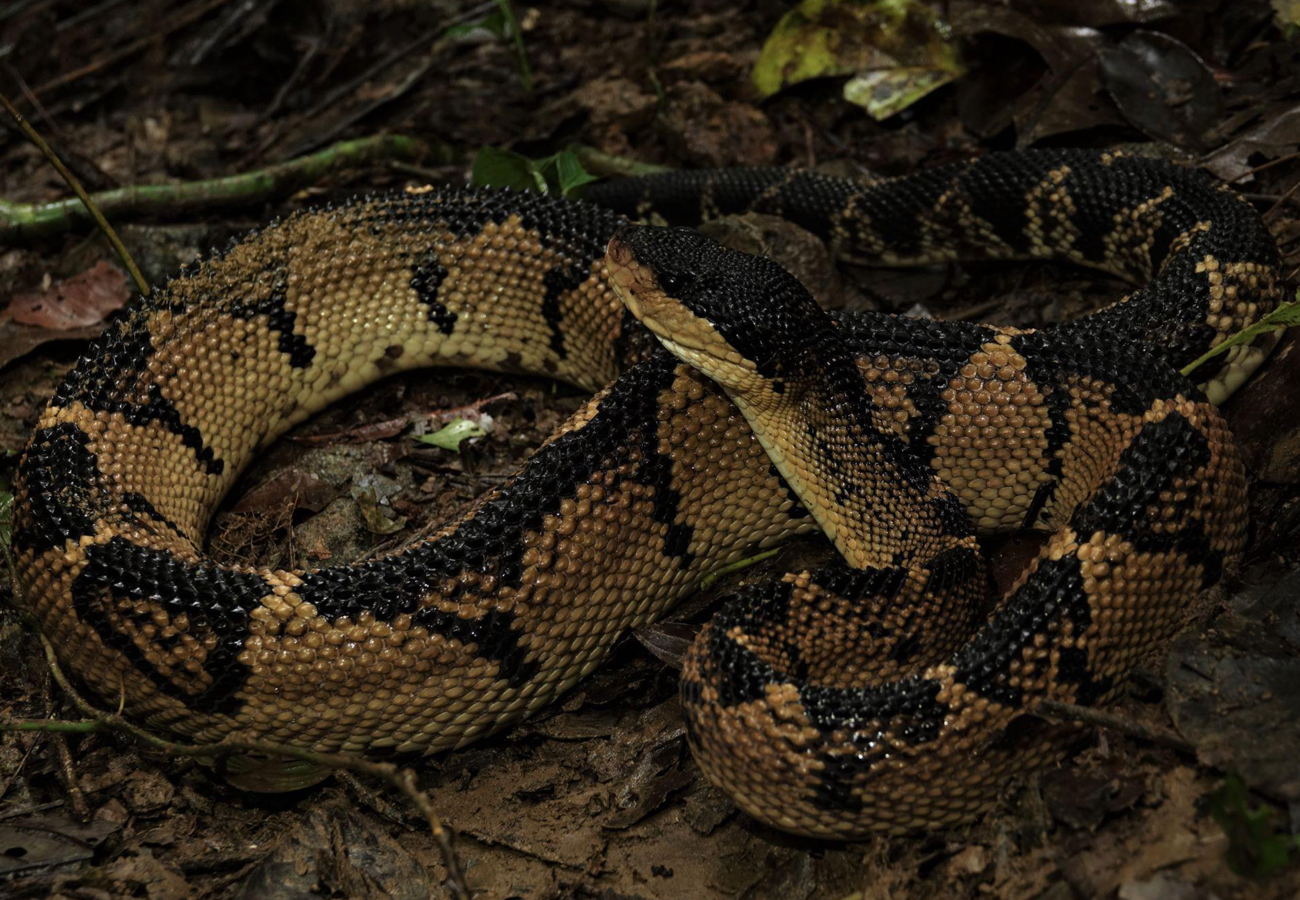Abstract
The neotropical viperid snake genus Lachesis Daudin, 1803 accomodates four venomous species that occur in forested areas from Central America, in Nicaragua and Costa Rica, to most of South America, southwards into southeastern Brazil and Bolivia (Campbell & Lamar 2004). This genus is unique among neotropical crotalines in having a high number of ventrals, dorsal, and cephalic scales, while also being oviparous (Campbell & Lamar 2004). Lachesis melanocephala Solórzano & Cerdas, 1986 is a large-sized viper, distributed from the Pacific coast of southwestern Costa Rica to northwestern Panama (Campbell & Lamar 2004). This species reaches up to 2.4 meters of total length, and can be diagnosed based on its uniformly black dorsal head pattern and inconspicuous postocular black stripe (Fig. 1; Campbell & Lamar 2004).
References
Anonymous [International Commission on Zoological Nomenclature] (1985) International Code of Zoological Nomenclature. Third edition. London (International Trust for zoological Nomenclature): i–xx + 1–338.
Anonymous [International Commission on Zoological Nomenclature] (1999) International Code of Zoological Nomenclature. Fourth edition. London (International Trust for zoological Nomenclature): i–xxix + 1–306.
Anonymous [International Commission on Zoological Nomenclature] (2012) Amendment of Articles 8, 9, 10, 21 and 78 of the International Code of Zoological Nomenclature to expand and refine methods of publication. Bulletin of zoological Nomenclature, 69: 161–169. <https://doi.org/10.21805/bzn.v69i3.a8.161>.
Campbell, J. A. & Lamar, W. W. (2004) The venomous Reptiles of the western hemisphere. Volume 1. Comstock (Cornell University Press): 1–504.
Daudin, F. M. (1803) Histoire naturelle, générale et particulière, des Reptiles. Volume 5. Paris (F. Dufart): 1–365, pl. 59–70, 2 tab.
Fernandes, D. S., Franco, F. L., & Fernandes, R. (2004). Systematic revision of the genus Lachesis Daudin, 1803 (Serpentes, Viperidae). Herpetologica, 60 (2): 245–260. <https://doi.org/10.1655/02-85>.
Linné, C. (1766) Systema Naturae. Editio duodecima, reformata. Tomus 1, Pars I. Holmiae (Laurentii Salvii): 1–532.
Solórzano, A. & Cerdas, L. (1986) A new subspecies of the bushmaster, Lachesis muta, from southeastern Costa Rica. Journal of Herpetology, 20 (3): 463–466. <https://doi.org/10.2307/1564518>.
Solórzano, A. & Sasa, M. (2020) Redescription of the snake Lachesis melanocephala (Squamata: Viperidae): designation of a neotype, natural history, and conservation status. Revista de Biología tropical, 68 (4): 1384–1400. <https://doi.org/10.15517/rbt.v68i4.42359>.
Zamudio, K. R. & Greene, H. W. (1997) Phylogeography of the bushmaster (Lachesis muta: Viperidae): implications for neotropical biogeography, systematics, and conservation. Biological Journal of the Linnean Society, 62 (3): 421–442. <https://doi.org/10.1006/bijl.1997.0162>.


